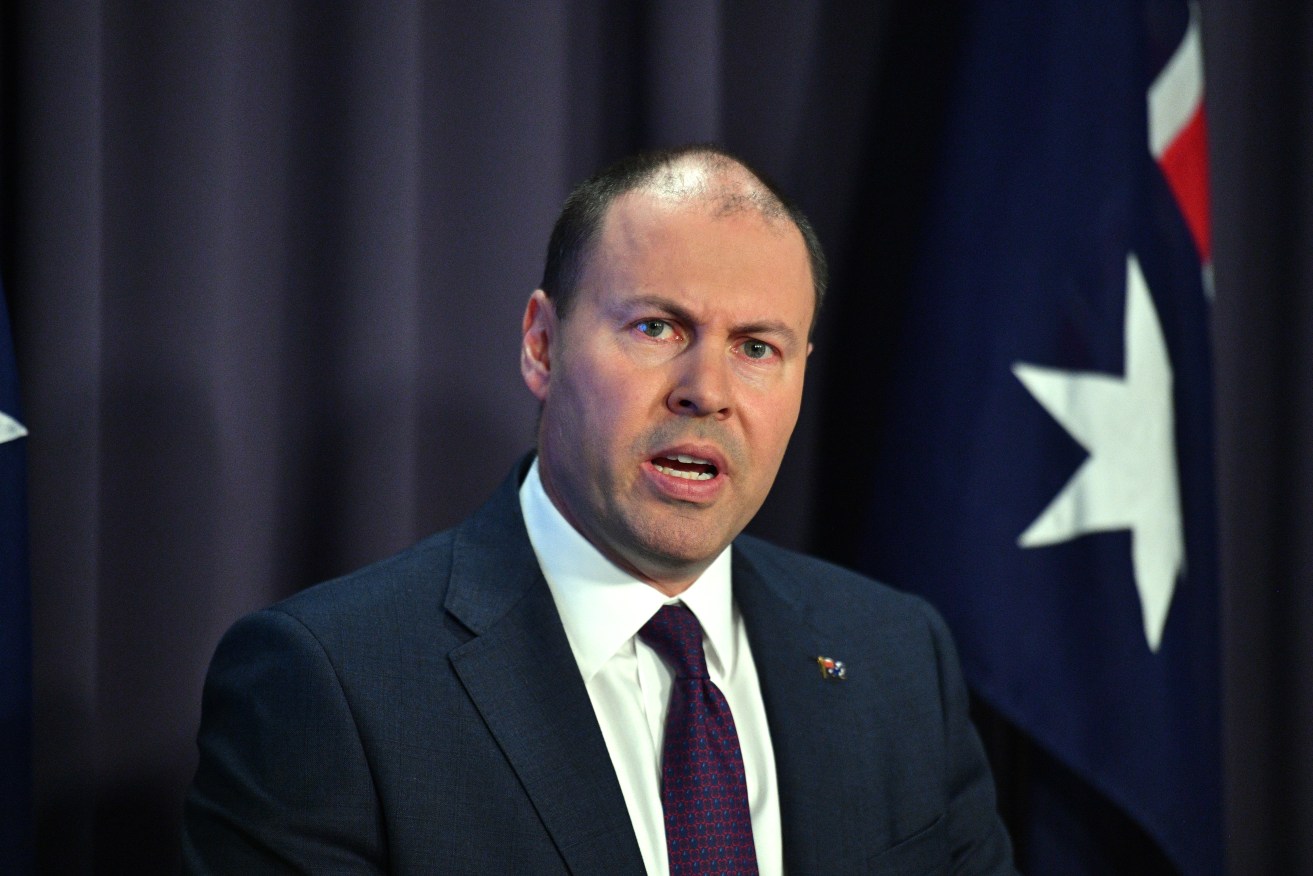Federal budget war chest could go to tax cuts
The Morrison government has an $11 billion budget war chest ahead of the federal election expected in May, which could mean extra money in voters’ pockets.

Treasurer Josh Frydenberg. Photo: AAP/Mick Tsikas
The mid-year economic and fiscal outlook released in Canberra today noted a “contingency reserve” of $11.2 billion.
The reserve gives a buffer for the government if economic parameters change or deals with the states and territories are renegotiated.
But it also covers “decisions taken but not yet announced by the government … and provisions for other specific events and pressures that are reasonably expected to affect the budget estimates”.
Asked whether some of the money could go to further personal income tax cuts, Treasurer Josh Frydenberg said the government had a track record to uphold.
“We are committed to targeted spending and lower taxes,” Frydenberg told reporters in Canberra.
“But we’re not going to make any announcements today. What we are saying is that we will approach all these issues in a carefully considered, methodical way, just as we have done to date.”
Finance Minister Mathias Cormann said the government still had a budget to come in April and a pre-election budget update.
“It is no secret we are committed to lower taxes as part of our plan to strengthen the economy, create more jobs and ensure that Australians have the best possible opportunity to get ahead,” Cormann said.
The government already has plans in place to cut income tax, starting with relief of up to $530 for low and middle income earners in 2018/19, and aiming for a marginal tax rate of 32.5 per cent for around 94 per cent of all taxpayers in 2024/25.
Frydenberg is expecting a federal budget surplus of $4.1 billion in mid-2020, almost double the $2.2 billion projected in the May budget.
He is also forecasting a smaller deficit of $5.2 billion in the current financial year, more than half the original forecast of $14.5 billion deficit for 2018/19.
The improvements – outlined in the budget update published today – come after the government has raked in more revenue than expected, buoyed by strong employment growth and corporate tax receipts.
Tax revenue will be $7.2 billion higher than forecast in 2018/19, while non-tax receipts will be $1.2 billion higher, bringing total revenue to $482.1 billion.
The other side of the ledger has also been contributing to the results, with the government making fewer payments.
Since the May budget, total payments have decreased by $1.3 billion for 2018/19 and by $3.5 billion over the four years to 2021/21.
The mid-year economic and fiscal outlook confirmed Australia’s economic strength, Frydenberg said.
“These are the welcome dividends of sound budget management and the government’s plan for a strong economy,” he said.
After the $4.1 billion surplus in 2019/20 – which will be the first since John Howard was prime minister – the Coalition expects to deliver more surpluses – of $12.5 billion in 2020/21 and $19 billion in 2021/22.
The government’s predictions for the economy have also been revised, with growth expected to be 2.75 per cent this financial year, before speeding up to three per cent in 2019/20 and staying at that pace for the following two years.
The unemployment rate is projected to remain at five per cent this year, and stay that way up until mid-2022.
But the government has trimmed its wage growth forecasts by 0.25 per cent for this financial year and the next.
It’s expecting 2.5 per cent wage growth in 2018/19 and three per cent in 2019/20.
“In Australia, as in other advanced economies, the response of wages to improving labour market conditions had been slower and more muted than in past cycles,” the budget update states.
The statement also outlines the costs associated with policies introduced since the budget in May.
A huge boost to funding for aged care services up to 2021/22 – totalling $552.9 million – was announced today.
The windfall includes money to help an extra 10,000 older people with high-level care needs get support at home.
– AAP




